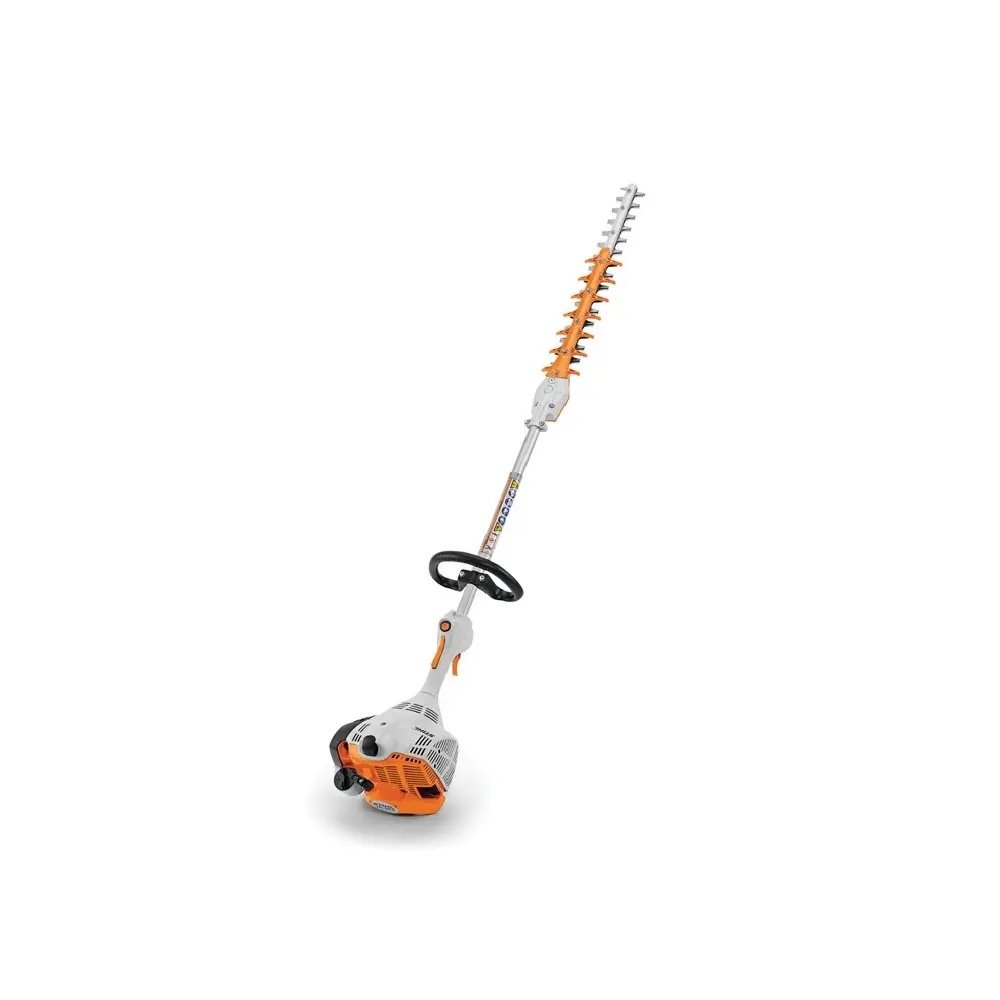Hedge Trimmer Safety
To maximize safety, performance, and proper operation of hedge trimmers, it is essential that all users carefully review and fully understand how to operate power hedge trimmers safely. Long handle or articulating hedge trimmers offer maximum protection to the operator as the blades are farthest away from the operators hands. Less of a chance for serious hand injury. All operators are required to be trained prior to operation of the equipment.
Personal Protective Equipment
Before you work with any piece of equipment it is important to review the safety manual for the tool.
PPE that is required for the user are:
Wear safety goggles or safety glasses with top and side protection complying with ANSI Z 87.1. Wear a face shield or face screen when needed.
Wear hearing protection (ear plugs or earmuffs) to protect your hearing.
Protect your hands -heavy-duty, cut proof and nonslip gloves to improve your grip and protect your hands.
Wear sturdy safety-toed boots with nonslip soles.
Trimmer Chaps- are needed to protect your legs from cuts or abrasions.
Operating a Hedge Trimmer
Starting the Hedge Trimmer
Do not start the unit while the blade is folded or locked. Always set the cutting angle first.
Start the hedge trimmer flat on the ground, with the blades clear of obstructions.
Never "drop start" or start the unit while it rests on the blade tips.
Hold the unit firmly when starting to maintain control.
After starting, use both hands on the front and rear handles.
Keep a secure two-handed grip throughout use.
Turn off the unit immediately if it vibrates excessively. Tag it for inspection at an authorized service center before reuse.
Cutting with the Hedge Trimmer
Hold the trimmer with two hands, keeping thumbs wrapped around the handles for a secure grip.
Squeeze the throttle slowly to accelerate, then carefully feed the blades into the material.
Important Safety Precautions
Always use two hands. If the unit slips, do not try to catch it; let it fall to avoid injury.
Maintain a stable stance with both feet on the ground. Avoid slippery surfaces, stairs, rocks, or other hazards.
Never use a ladder or temporary platform. Use a shaft-mounted trimmer for tall bushes.
Do not hold or let others hold the material while cutting.
Keep both hands on the unit to control the cutting action.
Direct the muffler exhaust away from your body.
Avoid touching the muffler or surrounding areas until it has cooled.
Prevent flammable debris buildup in the exhaust area to avoid fire risk.
Keep all body parts away from the blades and cutting area.
Do not allow anyone to reach into the cutting area while the unit is running.
Maintain a clear line of sight to the blades and cutting area.
Establish a 15-foot (5-meter) safety zone around the cutting area; only allow others to enter when the trimmer is off and blades have stopped.
Direct blades away from your body at all times.
Stay within the trimmer’s cutting capacity to prevent jams, blade damage, and poor performance.
Use a pruner or chain saw for branches larger than the trimmer’s capacity.
Limit cuts to 6 inches per pass for cleaner, safer cuts and better control.
Avoid cutting in poor visibility conditions; ensure you can always see the blades and cutting area.
Watch for any unusual changes (vibration, noise, fuel smell, or poor performance) as these could indicate a problem requiring immediate attention.


